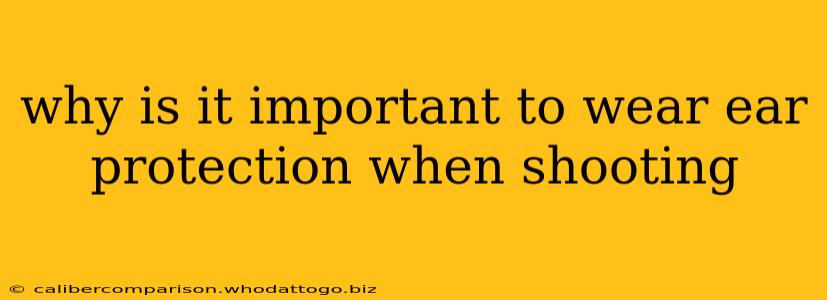Hearing loss is a serious, often irreversible, condition. For shooters, the risk is significantly higher due to the intense noise generated by firearms. Understanding why ear protection is paramount and choosing the right gear can safeguard your hearing for years to come.
The Dangers of Gunfire to Your Hearing
The sound of a firearm discharging is incredibly loud. We're talking decibels far exceeding safe levels for prolonged or repeated exposure. Even a single shot from a relatively quiet .22 caliber pistol can easily surpass 140 decibels – a level that can cause immediate hearing damage. Higher-caliber weapons, shotguns, and even certain types of ammunition produce sounds that easily reach 160 decibels or more. To put this in perspective, a jet engine at takeoff registers around 150 decibels.
Repeated exposure to these intense noises, even without immediate pain, cumulatively damages the delicate hair cells in your inner ear. This damage can manifest as:
- Temporary Threshold Shift (TTS): A temporary hearing loss that resolves after a period of time. While temporary, repeated TTS significantly increases the risk of permanent damage.
- Permanent Threshold Shift (PTS): Irreversible hearing loss that can range from mild difficulty hearing high-frequency sounds to profound deafness.
- Tinnitus: A persistent ringing, buzzing, or hissing in the ears, often a symptom of noise-induced hearing loss. This can be incredibly disruptive to daily life.
- Hyperacusis: Increased sensitivity to everyday sounds, making even normal noises uncomfortable or painful.
Types of Hearing Protection for Shooters
Fortunately, effective hearing protection is readily available and relatively inexpensive. There are two main types:
-
Earmuffs: These offer excellent noise reduction across a wide frequency range and protect the entire outer ear. They are ideal for reducing the overall loudness of gunfire and are particularly useful in environments with multiple shooters. Look for a Noise Reduction Rating (NRR) of 22 or higher for optimal protection.
-
Ear Plugs: These are inserted directly into the ear canal and are portable and convenient. They come in various materials (foam, silicone, custom-molded) and NRR ratings. While generally less effective than muffs at reducing overall noise, they can still provide significant protection, especially when combined with earmuffs (double hearing protection).
Beyond the Range: Protecting Your Hearing in Other Shooting Activities
The need for ear protection extends beyond the shooting range. Whether you're hunting, practicing at home (if legally permitted), or participating in competitive shooting sports, consistent use of ear protection is essential.
Choosing the Right Protection and Proper Usage
Consider these factors when selecting ear protection:
- Noise Reduction Rating (NRR): A higher NRR indicates greater noise reduction.
- Comfort: You're more likely to wear protection consistently if it's comfortable.
- Fit: Proper fit is crucial for effective noise reduction.
- Durability: Choose durable equipment that can withstand the rigors of shooting activities.
Remember, even with hearing protection, it's wise to take breaks and avoid excessive exposure to gunfire.
Conclusion: Prioritize Your Hearing Health
Hearing loss is a preventable condition. By prioritizing the consistent use of appropriate ear protection, you can significantly reduce your risk of hearing damage and enjoy the sport of shooting for many years to come. Your hearing is invaluable; protect it.

